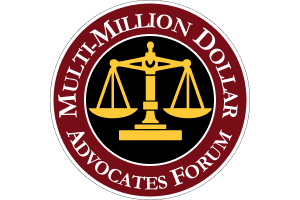The Newsletter as a Marketing Tool: Purpose
by: IRA H. LEESFIELD
Leesfield & Partners
2350 South Dixie Highway
Miami, Florida 33133
(305) 854-4900
1. As you can see from the attached sample newsletters, our firm reaches out to clients and members of the bar on a monthly basis. We have an editorial schedule which involves at least one attorney every month in the preparation of the copy for our newsletter. The following considerations are essential to building a marketing program through the use of a monthly newsletter.
A. Preparing your database — The most difficult decisions and the most tedious work involves building your database.
First, you must select a computer software program that allows you to reach your ” universe”. Next, this effort must be staffed. There should be someone in your office dedicated to building and updating the database. The decision and selection as to who should be included is critical as a cost factor, as well as, an intelligent marketing decision.
B. Choosing The Market
1. Attorneys
2. Family/friends
3. Clients: current & former
4. Businesses in your community
5. Know the advertising regulations from your state bar
C. Researching and Writing the Newsletter — An attorney and staff member should coordinate the topics and develop a theme for each monthly newsletter. There should be something about your newsletter which will make the readers want to keep it. The articles should not be self-serving, but at the same time should let your readers know the types of results you are getting. The copy should be educational, interesting, and eye-catching.
1. What do you want to achieve – more business/more exposure.
2. Inform, educate, update.
D. Topic Selection — Your newsletter should focus on cases and issues related to your practice, even if the information comes from sources outside your firm, i.e., studies from other bar associations, medical associations, etc. Selection of the theme or topic is essential to building good readership. The use of powerful graphics and consistency of your masthead and design are likewise important.
1. Contents – case notes, law updates, firm updates, web sites
Attorney profiles.
E. Newsletter Production — The copy should be prepared or at least reviewed by an attorney. The choice of subjects should be “roundtabled” in your office so that every lawyer, either partner or associate, has input. Use a graphics designer to do the layout and assist in the selection of photographs and other graphic designs. (Note, please remember some of your cases may have confidential agreements which could be violated inadvertently.)
Design –
1. Desktop publishing —
a. Word Processors
b. PageMaker
c. Photo CDS
d. Scanners
2. Graphics Design Co.
F. Distributing the Newsletter. Choose your distribution method.
Mail, Fax, E-mail, Web-page
G. Anchoring Your Monthly Newsletter — In addition to sending out our monthly faxletter, we do a quarterly anchor in full color which reinforces the firm’s profile. In between faxletters and newsletters, we also include small updates and personal notes to our constituents/attorneys/clients.
H. How to Handle Feedback —
Do not expect every recipient of your newsletter to like it, be impressed by it, or in fact, want to receive it. You will get mostly positive feedback, but will also receive some negative feedback. Be prepared to handle this appropriately. Be sure your readership knows how to reach you and, to whatever extent possible, try to make the newsletter interactive.
I. Helpful DO’s and DON’T’s
DO assign a staff member to building the database.
DO set up an editorial schedule.
DO make sure that a lawyer writes or reviews all copies.
DO hire a professional consultant to do graphics and layout.
DO follow-up immediately to any responses.
DO be sure to include information that your readers are interested in and want to keep.
DON’T undertake this project unless you can do it consistently and on a regular schedule.
DON’T undertake this project unless you budget for it.
DON’T include items or information in a newsletter that are offensive or insensitive.
DON’T be shy about sharing your firm’s own rewards.
DON’T be boastful or not informative.
DON’T compromise quality.







